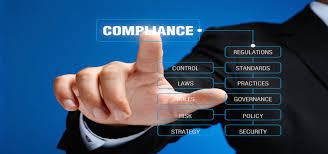DOJ’s Compliance Message: Implement Technology Solutions

DOJ’s revised Evaluation of Corporate Compliance Program Guidance (“DOJ Guidance”) is yet another reminder on how far compliance has evolved and the path forward. Compliance programs have to incorporate real-time monitoring, rapid data analysis, emphasis on corporate culture and organizational justice build on employee engagement, prompt investigations and consistent discipline. A compliance program is like a shark – it has to keep moving and evolving. If it stops or even slows down, the compliance program will wither on the vine.
Pushing all the platitudes to the side, and focusing on the real world for a minute – how are companies going to craft and implement their compliance programs to meet the latest set of expectations?
Companies have to quickly embrace technology solutions to build an effective program in today’s economy. What do I mean by “technology solutions”? Large, global companies have more available resources that mid-size or smaller companies.
Compliance vendors are assembling integrated product and service offerings to capture the demand for a single, integrated compliance platform. Data analytics offerings are available for use with these platforms but more work is needed, and capabilities have to be added.

Compliance automation is a quickly becoming a basic requirement. To the extent it is feasible, it would be ideal to implement a single automated platform to monitor and access information concerning employee reporting, internal investigations, third-party risk management, corporate culture (surveys and results), conflict of interest, transaction monitoring and audit status. These are basic issues that require ongoing monitoring and assessment.
Companies have to be careful when implementing single-function platforms to make sure that they are compatible with future offerings and needs. Compliance vendors have to quickly invest and expand their offerings. There is a growing and significant demand for compliance automation that is easy to use and fulsome in reporting and monitoring functions.
Technology, however, is not the single answer – controls and staff have to operate effectively with the tools they are given. A company without a culture of compliance cannot succeed. A compliance program with insufficient resources, no matter what technology they have, will fail. Every aspect of an effective compliance program is interdependent.
A compliance program without technology and automated solutions is so far behind the curve that it is hard to imagine how such a program can succeed. Paper (literally) programs cannot succeed in this electronic and data-driven economy.

Compliance vendors have to develop new solutions. In some respects, the amount of investment in new compliance products is way behind the demand for compliance solutions. The potential gains from a real and significant first mover in the industry are significant and could lead to rewards in the market. Lets hope they can get it done and move quickly.
From the compliance program perspective, compliance officers should be educating corporate leadership at senior management and the board on the rise in compliance expectations and the need for rapid evolution in compliance program operation. Again, companies have to invest in technology and they have to do so with sufficient commitment and resources.















